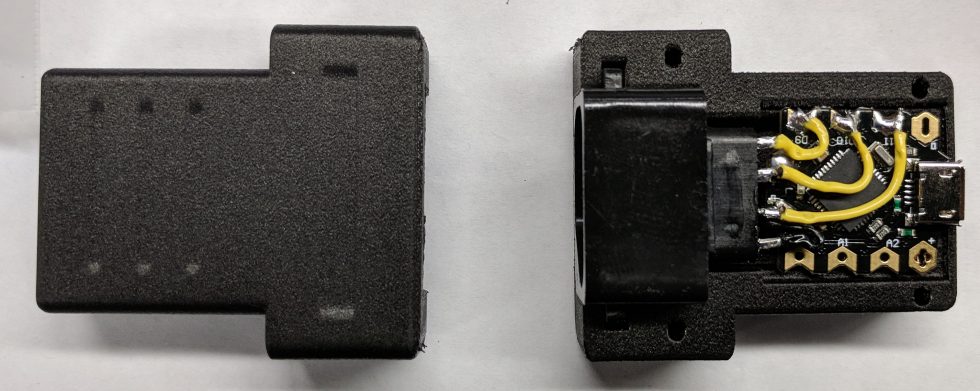
Power Glove Gamepad Adapter
Jan. 3rd 2018
I’ve been recently designing my own electronics enclosures and having them 3D printed in Onyx carbon fiber. After finishing up a Virtual Boy controller USB adapter, I decided to come back to the Nintendo Power Glove and finally design a housing for my PG adapters. Rather than design a housing for an old adapter, I also decided to update the electronics and firmware. The Power Glove gamepad USB adapter is what came out of that effort.

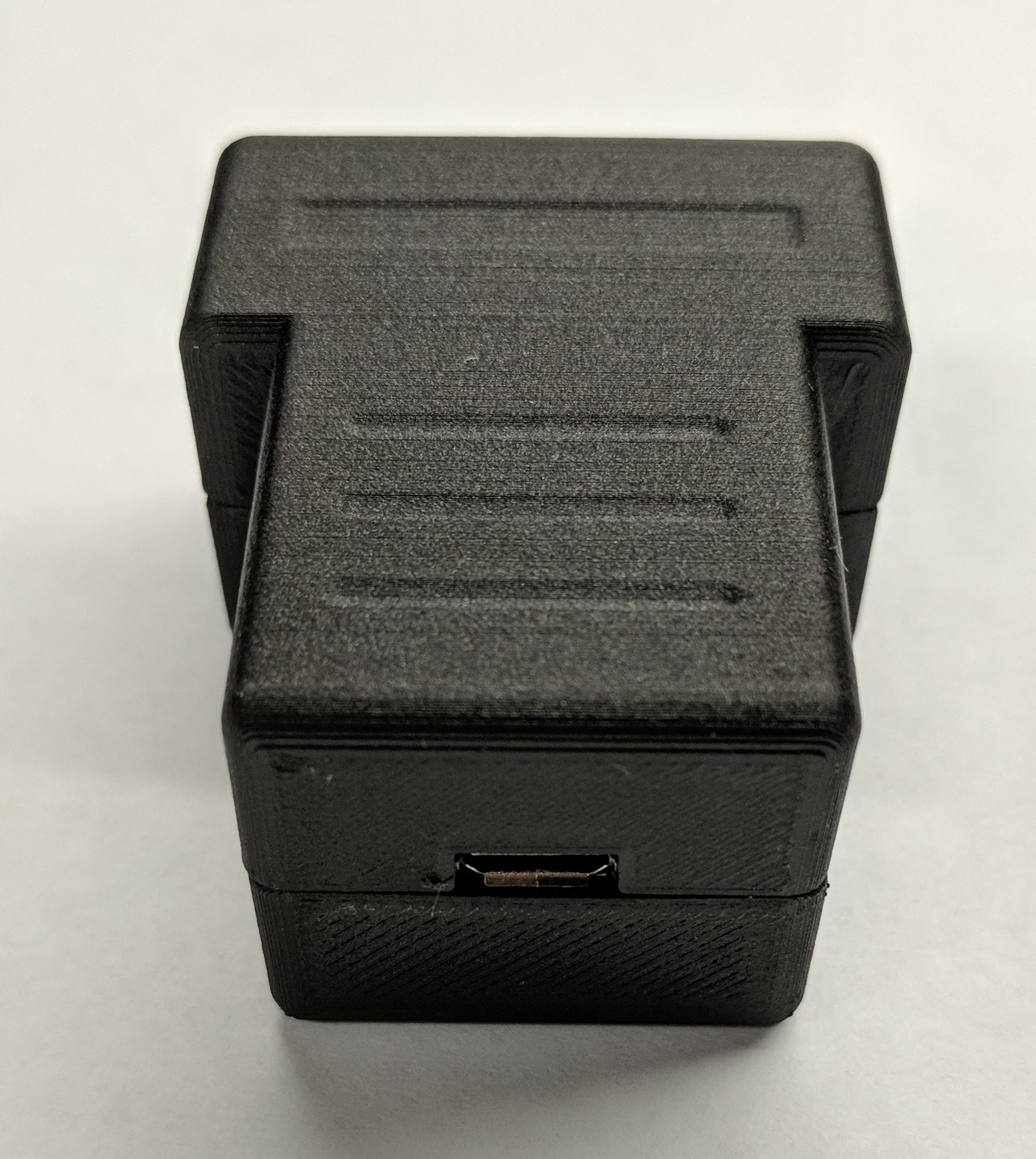
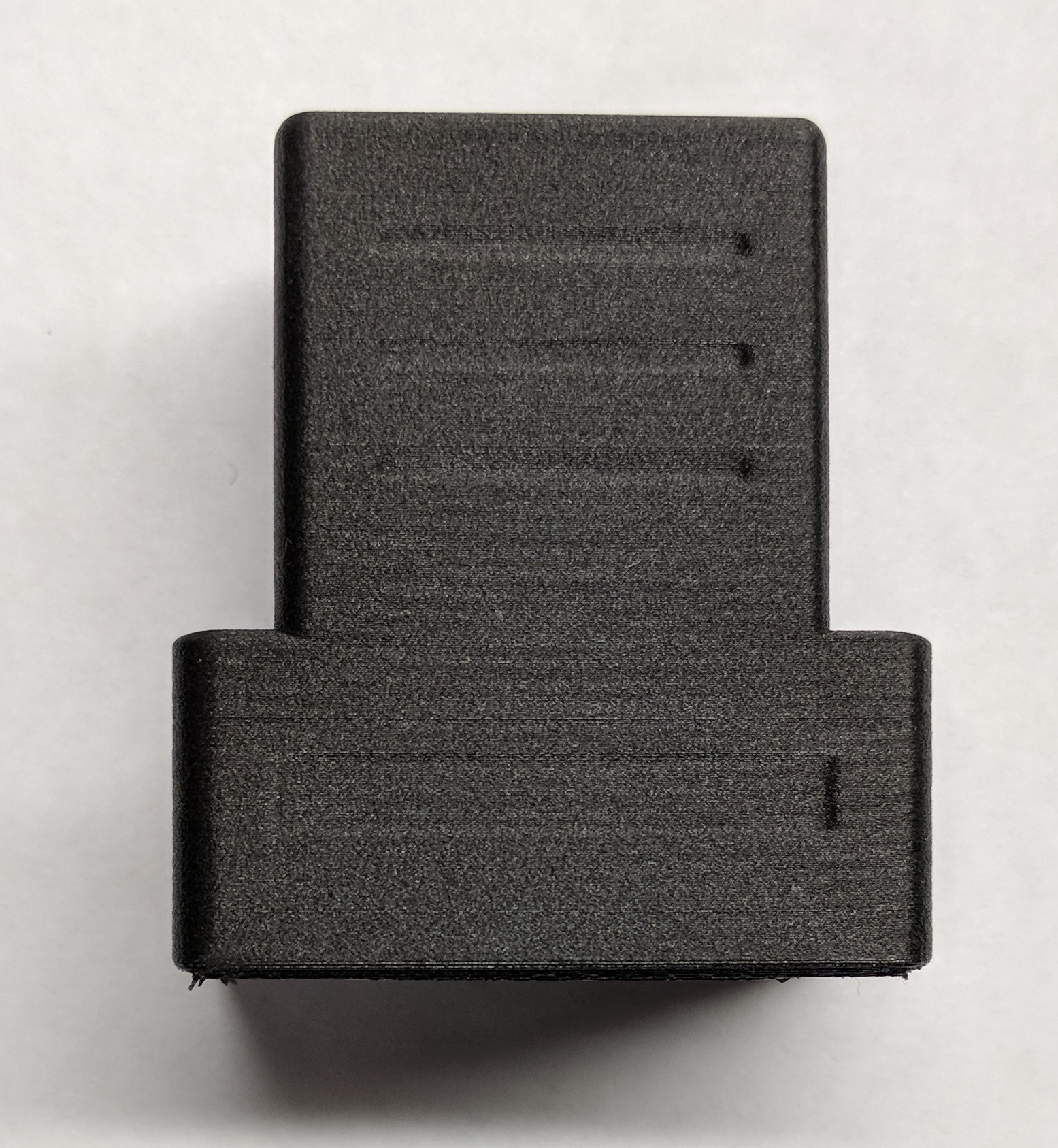
The Nintendo Power Glove adapter, or PG linkbox, is a Windows gamepad version that outputs over USB. The glove is run in high resolution mode with ultrasonic x,y,z tracker, rotation, and all four finger outputs (thumb, index, middle, and ring) as analog inputs. The buttons on the arm of the Power glove are output as keyboard keys for the numbers 1 through 9 (skipping 0 as it centers) and all the other more traditional looking Nintendo gamepad buttons are output as digital buttons. Here’s a shot of it being recognized as a gamepad in Windows 10.
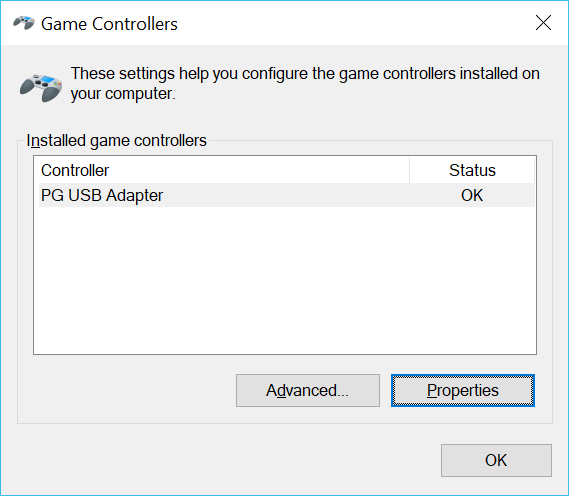
And then looking at the properties of the gamepad you can see some of the buttons and analog inputs being driven.
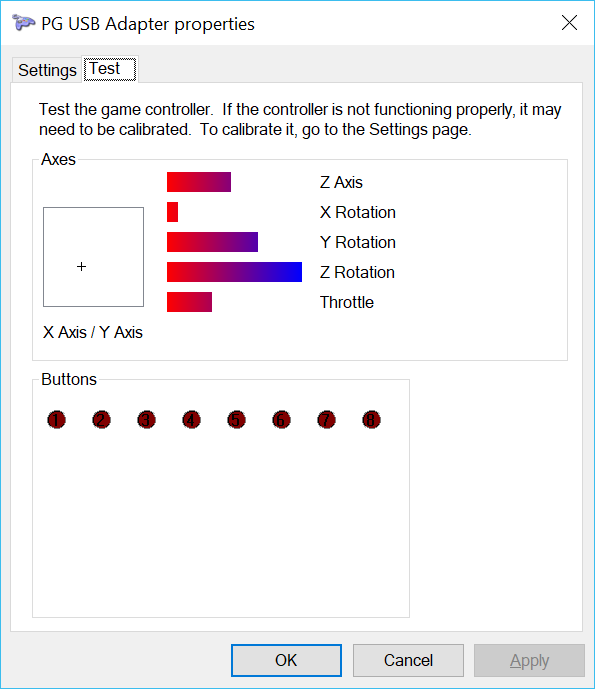
Not that the world needed another Power Glove adapter for the PC, but I wanted to come back and finally give the PG adapter a proper housing, which I never did in the past. I also wanted to make an adapter that didn’t require additional code to use like my past adapters did. The original PG linkbox, and the first USB version, outputted data over a virtual COM port and still required users to write code to map this serial output data to something useful in their program. With the latest version here, the Power Glove can be used out of the box plug-in-play with any application that can use a gamepad. Like games!
The great thing about this latest design is that it reports as a gamepad via USB HID but also still allows a virtual COM port interface. So all the filtering options I’ve offered in past adapters are also still there. You can see the current gamepad adapter virtual COM port menu in RealTerm below. That image also shows the serial port settings of 115200,8,N,1 with no parity.
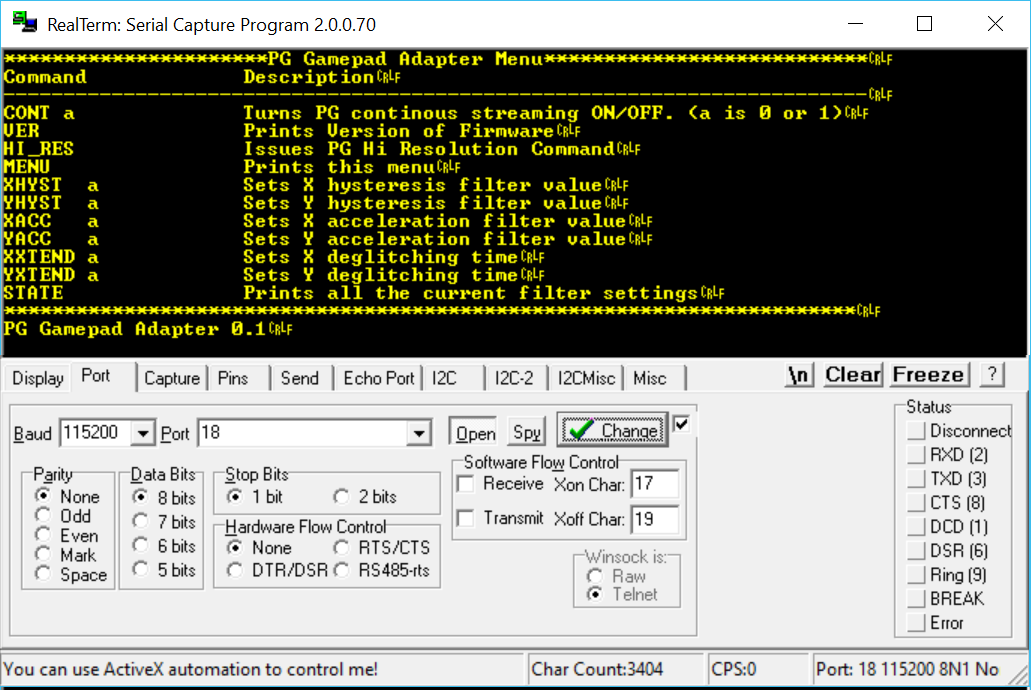
I made the housings a bit thicker than they needed to be but the thing is bomb proof now. And it only took me about 1.5 days to do the design. I’m pleased overall with how it came out. If you’re interested in getting an adapter then send me a message on my contact page. I won’t be building many of these but I have a few at the moment.
If you’d like to print the housings yourself then here are the top and bottom housing design files for 3D printing. Have fun!
 Mellott's VR
Mellott's VR